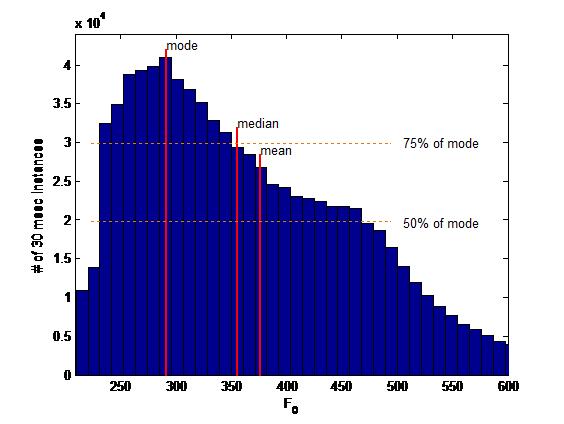Eric Hunter, PhD
Associate Research Scientist
Deputy Executive Director
National Center for Voice & Speech
Office PH: 303.446.4839
Email: eric.hunter@ncvs2.org
Popular version of paper 2pSC18
“An acoustical comparison of a child’s fundamental frequencies during structured
tasks and unstructured daily activities: A case study.”
Presented on Tuesday, November 11, 2008
156th ASA Meeting, Miami, FL
A new National Center for Voice and Speech study suggests that children use their voices radically
differently during diagnostic and therapy sessions than during their normal, everyday activities. This
finding suggests that the in-clinic measures used to diagnose and treat pediatric speech or vocal health
issues by speech-language pathologists or doctors may only tell a fraction of the story.
The study by a researcher at the National Center for Voice and Speech (NCVS) is the first to successfully
capture long-term, everyday voice use in a child. This study used the NCVS vocal dosimeter, a device
that can measure how a person uses his or her voice over the course of an entire day. To monitor
treatment and therapy, children's speech and voice patterns are traditionally captured using in-clinic
acoustic voice tests. In contrast, researchers were able to collect pediatric voice data in one child for 31
hours over several days.
The study examined an acoustic measure frequently used to assess a child’s voice, called fundamental frequency or pitch.
A healthy, 5-year-old boy was evaluated. Wearing the NCVS vocal dosimeter, the
child’s voice-use was captured during his everyday activities interacting with preschool classmates,
peers, and family. On a fourth day, it was also worn during four voice tasks typical of those used to
assess and track pediatric speech and vocal health issues.

[Figure 1. The child with the National Center for Voice & Speech Dosimeter accelerometer attached.] This voice data does not capture the actual words spoken. Instead, it captures the wearer’s pitch, volume, and amount of vocalizations.
LISTEN: adult voice sample as picked up by the device, for example only
During the 4 clinical vocal tasks, the child’s average pitch was about 257 Hz. This average matches very
closely to the body of speech language pathology research for the child’s age group. His mode, or the
pitch which he used most often, was also similar: 260 Hz. The significant differences occurred during his everyday activities. For example, the child’s mode was at a somewhat higher pitch (290 Hz). In addition, the really crucial information is that the child’s average
pitch during regular activities was nearly 100 Hz higher, or about 376 Hz, than the pitch that the usual
research shows. His average was skewed by some extremely high vocalizations (including squeals,
shrieks, screams, whining and other common child vocalizations) commonly occurring at 500Hz and
higher. Also very high (355 Hz) was his median pitch, or the pitch with half the values above and half the
values below. This value further emphasizes the sheer number of high pitches which the child produced
(i.e., half of the pitches he produces were above 355 Hz).

This study has several important ramifications. First, although vocalizations like squeals, shrieks, screams, and whines are frequent aspects of a young child’s voice use, a child would probably not make these sounds during clinical tests. Thus, when attempting to treat pediatric speech and vocal health conditions, it is essential to develop more accurate methods of measuring typical voice use. Second, although previous pediatric studies have tried to use acoustic tests to examine children’s voices, they rarely have gathered data from young children. One reason for this might be the difficulty in giving[Figure 2. Pitch distribution of a 5 year old boy over 34 hours of observation.]